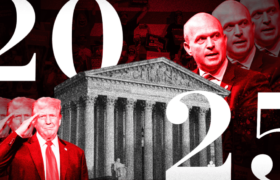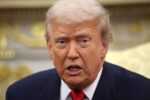As legal challenges mount and political tensions rise, many observers are asking just how much influence former President Donald Trump still holds over the United States Supreme Court. While Trump may not have an absolute “rubber stamp” in the high court, recent decisions suggest the six-justice conservative majority is far from obstructive to his interests.
Appointed three justices during his presidency—Neil Gorsuch, Brett Kavanaugh, and Amy Coney Barrett—Trump significantly shifted the ideological balance of the Court. Now, with a 6–3 conservative-liberal split, the question is not whether the Court is conservative, but how closely its decisions align with Trump’s political agenda.
A Complex Relationship
To be clear, the Court has not granted Trump everything he wants. In several high-profile cases, the justices—particularly Chief Justice John Roberts and even Trump-appointed justices—have shown a willingness to rule against Trump’s legal arguments, particularly on procedural or constitutional grounds.
For example, the Court refused to block the release of Trump’s tax records to prosecutors and dismissed a number of post-2020 election lawsuits without hearing them. These decisions were widely interpreted as signs of judicial independence.
However, when viewed as a whole, the Court’s behavior leans heavily conservative on many key issues, often aligning with policies and principles Trump champions—even if not directly requested by him.
Conservative Majority in Action
Over the past few terms, the Supreme Court has handed down several decisions that indirectly advance Trump-era priorities:
Striking down affirmative action in college admissions, echoing Trump’s critiques of “woke ideology” in education.
Overturning Roe v. Wade in Dobbs v. Jackson Women’s Health Organization, eliminating the federal constitutional right to abortion—something long advocated by Trump’s evangelical base.
Expanding gun rights, including decisions that strengthen Second Amendment protections in ways aligned with Trump’s positions on firearm ownership.
Limiting the regulatory power of federal agencies such as the Environmental Protection Agency (EPA), resonating with Trump’s deregulatory agenda.
These rulings reflect a broader trend: while the justices may not be taking orders from Trump, they are helping to institutionalize a vision of America that mirrors the values his political movement promotes.
The Role of Individual Justices
One of the most interesting dynamics within the Court is the behavior of Trump’s own appointees. Gorsuch, Kavanaugh, and Barrett are often viewed as ideological conservatives, but each has occasionally broken from Trump’s expected preferences.
For instance, Justice Gorsuch has authored opinions defending Native American sovereignty and civil liberties in ways that surprise some conservatives. Barrett, despite her staunchly originalist background, has sometimes sided with the Court’s more centrist rulings on procedural matters.
Still, on many culture war and executive power issues, the Trump-appointed justices consistently lean right, suggesting that even when they don’t act on Trump’s behalf, they support many of the same ideological outcomes.
Legal and Political Implications
The fact that Trump does not enjoy unchecked authority from the Supreme Court is reassuring for those concerned about separation of powers. However, the ideological makeup of the Court ensures that many of Trump’s key policy goals—especially those aligned with long-term conservative legal strategies—continue to gain ground.
For Trump and his political allies, this situation is close to ideal: the appearance of judicial independence, coupled with a consistent stream of rulings that support conservative priorities.
For his critics, the concern is that even without formal alignment, the Court’s long-term trajectory may cement Trump-era norms, especially in areas like immigration, federal agency authority, voting rights, and religious freedom.
Conclusion
Donald Trump may not have total control over the Supreme Court—but he doesn’t need it. The existing conservative majority, much of it built during his presidency, has already reshaped the American legal landscape in ways that align closely with his vision.
Whether intentional or incidental, the Court’s current direction reinforces many of Trump’s cultural and political goals. As new cases approach—potentially involving immunity claims, Jan. 6 prosecutions, and electoral access—the nation will continue to watch closely how far the Court’s conservative majority is willing to go.










